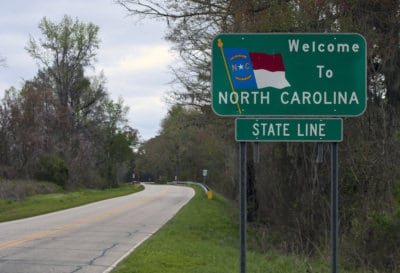This is Part Two in a series examining the residency laws of North Carolina, the new RDS system in place to process applications in compliance with the laws, and the experiences of community colleges who feel the RDS system has become a barrier to their students. Part One of the series can be found here.
Something wasn’t adding up for Amy Galla.
Galla is the director of college and career readiness at Isothermal Community College. She works with adult high school and high school equivalency students and helps them with their future plans. When she asked her transition coordinator about several students, the answer raised concerns.
“They said they had started the process, but that it just wasn’t going to work out,” Galla said. “That they just couldn’t go to college.”
After hearing several such answers, they pushed further and found out that the students were getting tripped up while filling out the Residency Determination Service (RDS) online questions.
Why? Galla and others within the community colleges believe it’s because their students’ backgrounds make their residency determination complicated, and their students’ competencies make using RDS difficult. To them, having a centralized, computerized process to determine residency makes continuing education more difficult at the community college level.
“My students, typically, they’re going to be first-generation college students,” Galla said. “And they’re most frequently living in very non-traditional circumstances, even when they’re 17 or 18 years old. These are living situations that would frequently surprise you. And the RDS system, apparently.”
The issue is a major one to community colleges, even if the numbers do not suggest an overwhelming percentage of students being impacted. When RDS studied its statistics for the year 2017, it found that only 6 percent of students who started the application process dropped off, which represents roughly 37,102 students. About a third of those were community college applicants.
For Tri-County Community College President Donna Tipton-Rogers, though, each one of those counts.
“Every single student that walks through our doors — all of the people in our counties, in our service area, in our surrounding area – they matter to us,” Tipton-Rogers said. “And it’s our job to make sure that we’re doing everything we can to build up these communities, make them stronger and make them better. It makes it extremely difficult if we turn even just one student away because we feel like we’re not doing our job.”
Especially when they are on the front lines, and they are seeing who these students are.
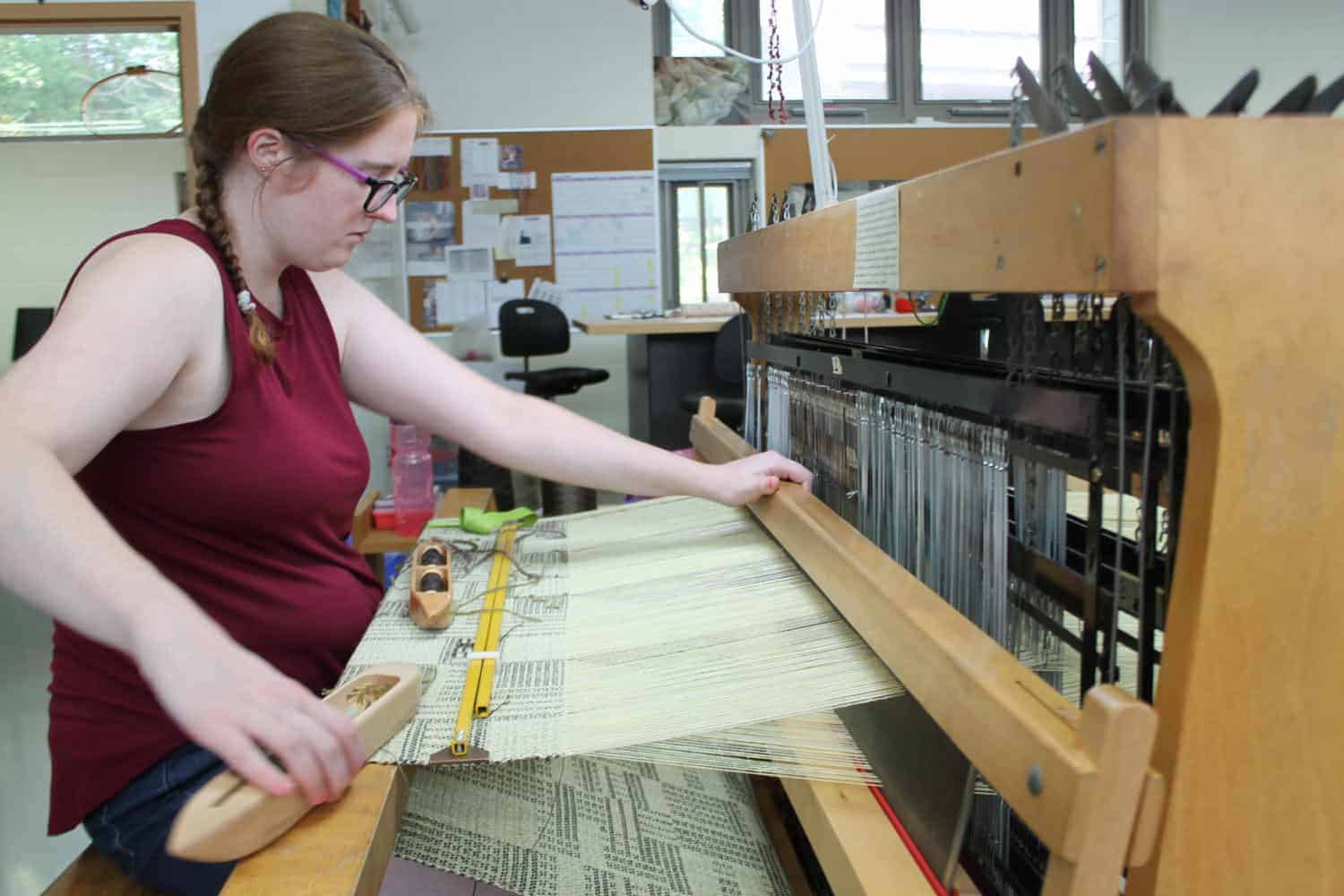
RDS closely follows the law, which makes assumptions about applicants, and the RDS questions are based on these assumptions. But the assumptions don’t translate well for some community college students.
We heard from and about students whose circumstances made it difficult to navigate the residency determination process as a result.
One student, whom we’ll call David to protect his family’s privacy, was within moments of walking away from pursuing a college education because he found the process difficult and “never-ending.”
David was born in North Carolina. He has lived in the same North Carolina county his entire life. He went to elementary, middle, and high school in that county. His dream is to become a construction manager, so he wanted to take advantage of a two-year program at his local community college that feeds into a nearby university to complete a management degree.
However, while David is a U.S. citizen, his parents came here illegally. And because he is younger than 24 years old, RDS requires information about his parents to establish whether they have a legal domicile (residence) before it can determine him as in-state.
The online portion of RDS is programmed to follow the law, and because David’s parents do not have a legal domicile in the state, the law presupposes he is out-of-state.
“I thought everything went well, according to the website,” he said. “But a month before school started, they emailed me back saying I was put out-of-state. I called the hotline number, and they said that was a common issue.”
David’s parents happened to know someone on the board of his local community college, and they reached the ear of the community college’s president. From there, the college walked David through the steps — but were appalled at the extent of information required.
David first provided his birth certificate. Then he submitted his driver’s license number. He then provided transcripts from his high school. RDS then requested information about his father’s work place, so he provided that. When RDS asked for his parent’s tax information, he provided that, too.
But then it asked for six-months’ worth of power bills and six-months’ worth of employment verifying information for his father.
“I answered the questions, and I kept providing more documentation,” David said. “I just kept providing information until I couldn’t provide any more.”
With help, David got through the process and is enrolled at school — in-state. But he wasn’t sure he was ever going to get that far.
“I was questioning it,” David said. “I wondered if it was really worth going through all this just to get my education.”
Another student moved from South Carolina to live with her aunt and uncle because her father had passed away and her mother was an abusive drug addict. Providing a home for her through age 18 was as far as her uncle and aunt were willing to go, and they did not want to participate in her college application process. Nor were they willing to be her legal guardians.
Despite living in North Carolina for several years, she could not get an in-state determination through RDS under these circumstances. Her counselor finally found information about emancipation online and walked her through the process, which she said she had to complete in order to be recognized as a North Carolina resident by RDS.
Yet another student, born abroad, was adopted by North Carolina residents and brought to the U.S. — to North Carolina — when she was young. Now, she’s estranged from her adoptive parents, and because she is under the age of 24, RDS is programmed to ask questions about parental and guardian information. (EdNC explores why in Parts Three and Four of this series.)
She was completing her high school diploma at Isothermal, so Galla’s staff were aware of her situation and were able to walk her through the process after learning of her struggles with RDS.
“She’s one of the students that I think of that, if we were not paying attention, she would have fallen through the cracks,” Galla said. “And it’s that extra attention that my team is putting into our students that is making a difference – otherwise we’d be losing these students. We are losing these students when we don’t know about them.”
Another applicant had moved to North Carolina from Georgia — a move of only about 10 miles for her. After two years, she started applying for college. During the two years, however, she was going through a divorce and a lengthy child custody battle. She did not change her Georgia driver’s license or voter registration for fear that it would impact her child custody case. She was deemed out-of-state by RDS.
“It doesn’t make sense,” Tipton-Rogers said. “She was living here, where she grew up. She was paying rent here. This was her home. But when something else is trying to determine that, it doesn’t know all the circumstances.”
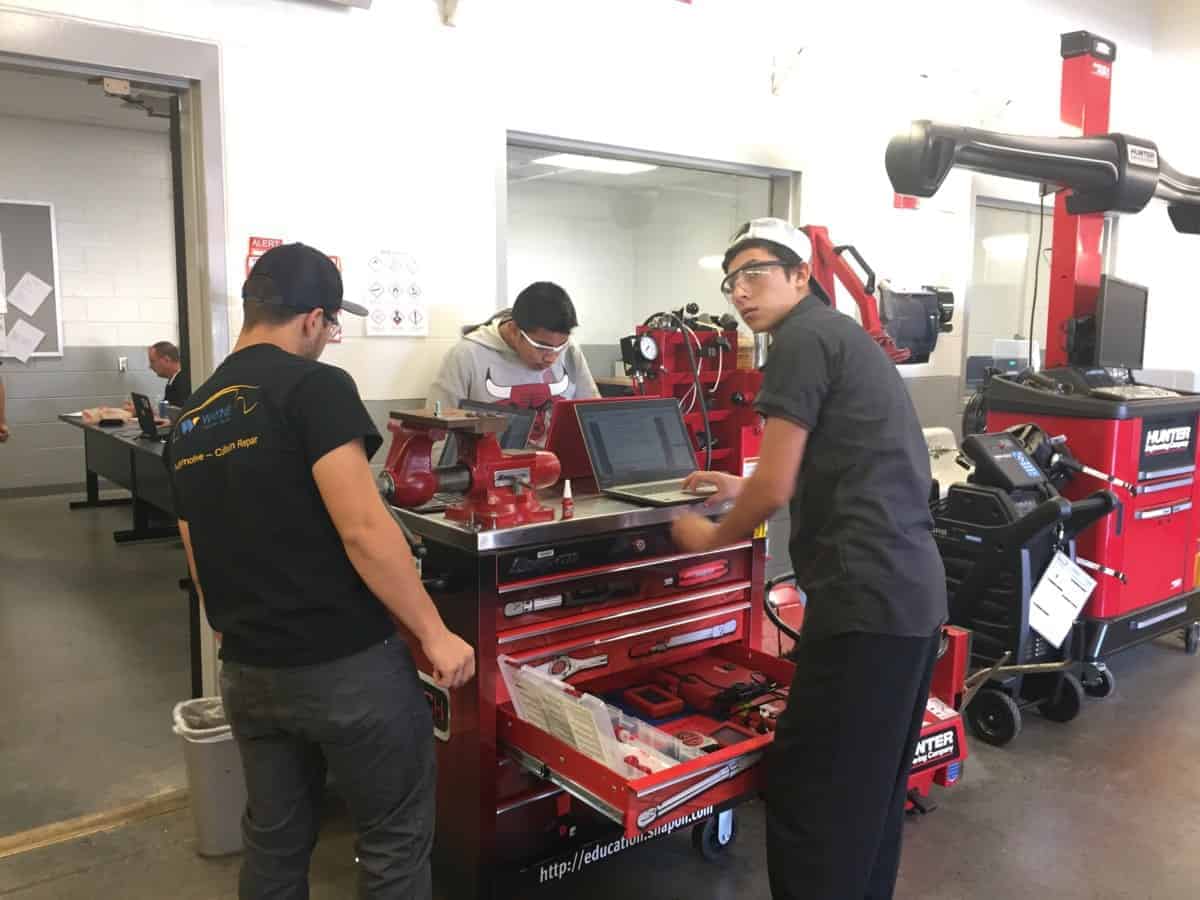
Students like these, community colleges say, need help navigating the process — and the colleges feel shut out.
“We cannot go in and reset a person or go in and do the appeal process,” Galla said. “And maybe that is an issue that needs to be addressed. I can see having this unified system, but not being able to be involved in it we’re just kind of at the mercy of this third-party system.”
The need for involvement, they say, extends beyond unique circumstances. Many community college students simply need someone to help them understand the process.
At Isothermal, Dean of Students Sandy Lackner decided to run some of the basic content of the RDS questions through a website that evaluates the language and determines the grade level of the lexicon. The result was a 16-point score, which suggests college-level reading.
“So we have students who are not yet even functioning on a 12th-grade level sometimes, and they’re trying to navigate the system,” Lackner said. “It’s already scary and unfamiliar, and we’re putting it at, potentially, four grades above where they’re functioning.”
Misunderstanding and errantly answering an RDS question can send the user down a line of questioning that becomes more confusing. And the answers are locked in. Even in cases where students reach out to the RDS hotline after being sent down an odd line of questioning, there was no way for them to go back and correct it.
“You can’t go back and edit it,” Galla said. “And that in itself is a challenge, I think.”
If a student is initially determined to be a non-resident, they have other options, such as the option to appeal within 10 days of the determination.
In some cases reported by the community colleges, an appeal would still be unsuccessful because of how the law is drafted. However, even for those that could be resolved on appeal, the community colleges worry that students won’t make it that far.
“Imagine yourself at 18 having to do an appeal in 10 days, and do the paperwork and make sure you do it right,” Galla said. “While you’re going to school, while you’re working, while you’re already not sure if you’re even meant to go to college. And those executive functioning skills of completing paperwork and turning things in are things that our students are developing and we’re supposed to be helping them develop.”
Many community colleges wonder if RDS was never a clean fit for their students.
Lackner thinks back on conversations she had and information sessions she attended before RDS was unveiled. One of the scenarios RDS was intended to verify was that a student actually resided where he or she claimed — and not claiming another address for better chances of admission and in-state tuition at the campus of their favorite athletics team.
“Someone claiming their vacation home in North Carolina as a residence so their child could go to N.C. State,” Lackner threw out as an example. But then she turned to Galla, her colleague at Isothermal, and asked about her high school equivalency students: “But how many of your students have vacation homes?”
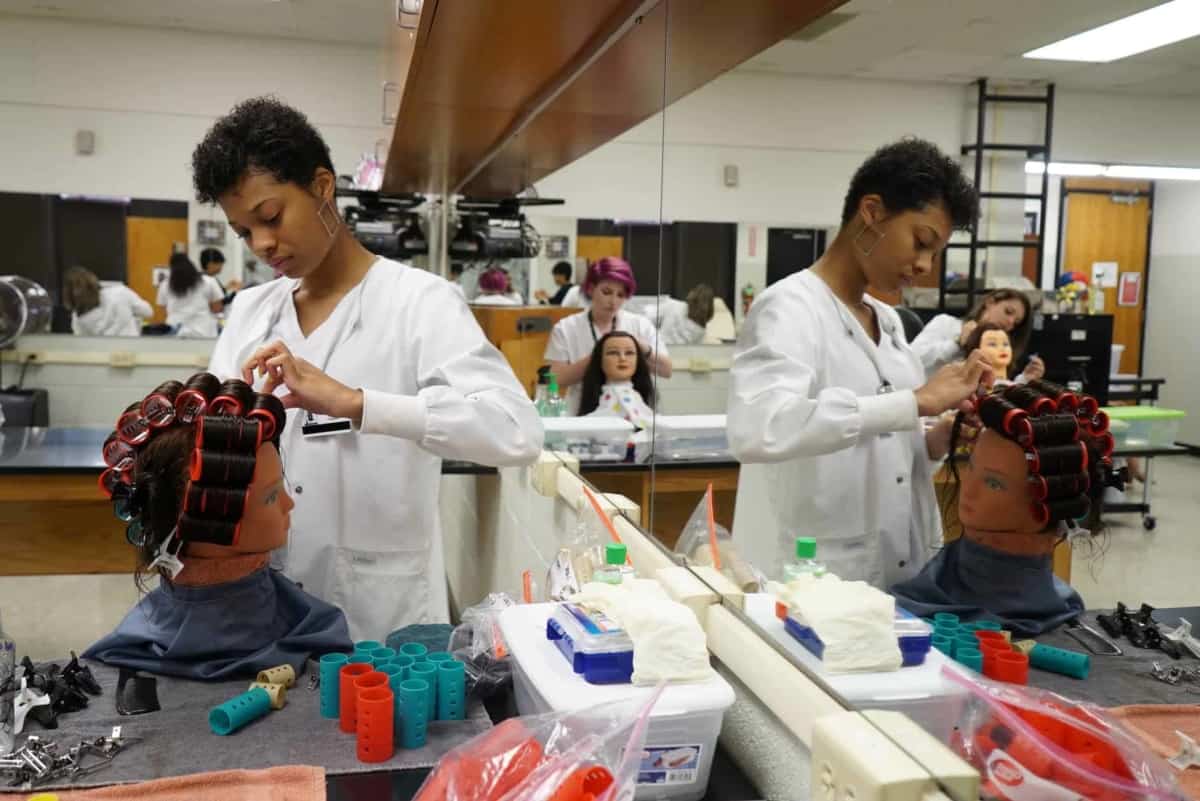
There is a sense of urgency in the voices of community college presidents when they talk about RDS. Which is natural, Wilkes Community College president Jeff Cox thinks, given the high stakes if a student cannot successfully complete the process.
“A lot of students quit,” Cox said. “They don’t even come to ask anybody’s help. When they hit that barrier in the RDS system, they just sign out and they’re done.”
Added Tipton-Rogers, “Those students walk out our doors and they may never ever come back. That’s what we’re up against.”
The community colleges say that RDS, and its application of the law, has increased the threat of those students walking out the door for many reasons.
The first is that out-of-state determination doesn’t just mean higher tuition. For many community college students, it means the difference between continuing education or not.
“They are low income,” Galla said. “And lower than low income, really. I think when you think of low income, and then you speak with my students, you find out there’s a whole other level of low income you wouldn’t even be aware of, if that’s not your background, or you’re not working with that population. They can’t afford the out-of-state tuition, so they just don’t continue.”
In some cases, they couldn’t even afford the in-state tuition. Instead, they rely on one of many public and private programs that offers to pay the tuition of low-income students. But a common requirement for these programs is that students attend school in-state — making residency determination key.
“[It is] determining whether your students can come to our college or not. That’s what it is determining,” Lackner said. “It’s not even about in-state or out-of-state at that point. It’s determining can a student go to college because as soon as they become out of state, they cannot go to college. Not here.”
Certainly, between the RDS reconsideration and appeals processes, some cases should ultimately be resolvable. But this is the other barrier community colleges speak of: Their students often are not confident about their decision to pursue further education, and if they hit one road block during the process, they may just stop.
“People get frustrated,” Lackner said. “And they think, ‘Oh, this must be a sign from God, I’m not supposed to continue moving forward because if I was, then He would clear every barrier for me.’ And we have created, as a state, significant barriers.”
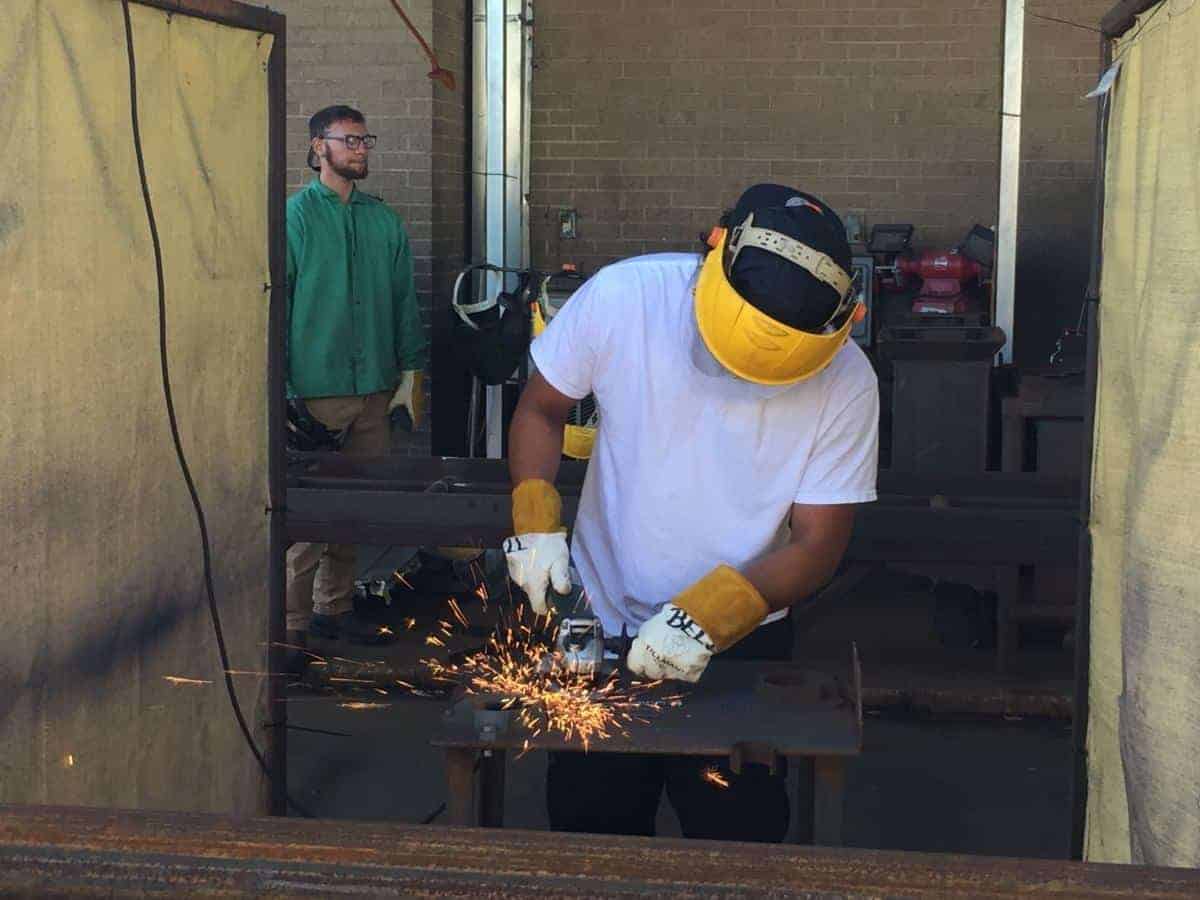
For some four-year universities, it may be helpful to identify those students that would give up on attending their schools after just one road block. It could be an indicator of future inability to handle the workload. However, for community colleges, it runs contrary to their mission.
“This is one of those barriers that, it filters out the people we need to be serving the most,” Galla said. “The most at risk. It’s creating an obstacle for those students to access higher education, which would then lead to them improving their life situation and be a contributing, productive citizen.”
The schools admit that an important concern for them is also losing the possible enrollment of an applicant who abandons the process. Community college budgets are determined, at least in part, based on the previous year’s enrollment. And during a time when enrollment numbers are down across the board, this additional loss hits hard.
But Galla says that it’s not about the community college losing money. It’s about the impact on the school’s ability to serve.
“You’re losing resources that would be to support the community,” she said. “It might be a software that we can’t afford anymore, or some type of IT solution, or it could be a teacher where we can’t offer that class anymore, or we have to close a program and we can’t offer that program anymore. And then the community is ultimately losing because we’re losing resources.”
The community suffers in another way, too.
“As we focus on the backbone of our economy,” Lackner added, “and the skills gap that we’re seeing, we have people, we have jobs, and we have this in-between that are not being filled.”
Community colleges are a common place for students to go and add those necessary skills to fill the “in-between,” which, in turn, impacts the state economy and the community.
“Wouldn’t you want everybody who’s living in your community to have open access to get an education and try to better themselves?” Cox wondered. “If you can’t get your heart into it just because it’s the right thing to do for another human being, then we need to look at it as an economic imperative and say we just want the best educated work force that we can have — so anything we can do that reduces the barriers for people out there who are wanting to improve, we should do it.”
Tipton-Rogers concluded, “It affects us, and it affects us in ways that many people may not understand. It affects our students, and it affects the way we feel about the rules and regulations that we’ve been given.”
Part Three of the series, released tomorrow, will look closer at RDS — a legislative directive intended to ensure residency laws are followed. We will trace it from its birth and talk to the people who gave life to the machine.



